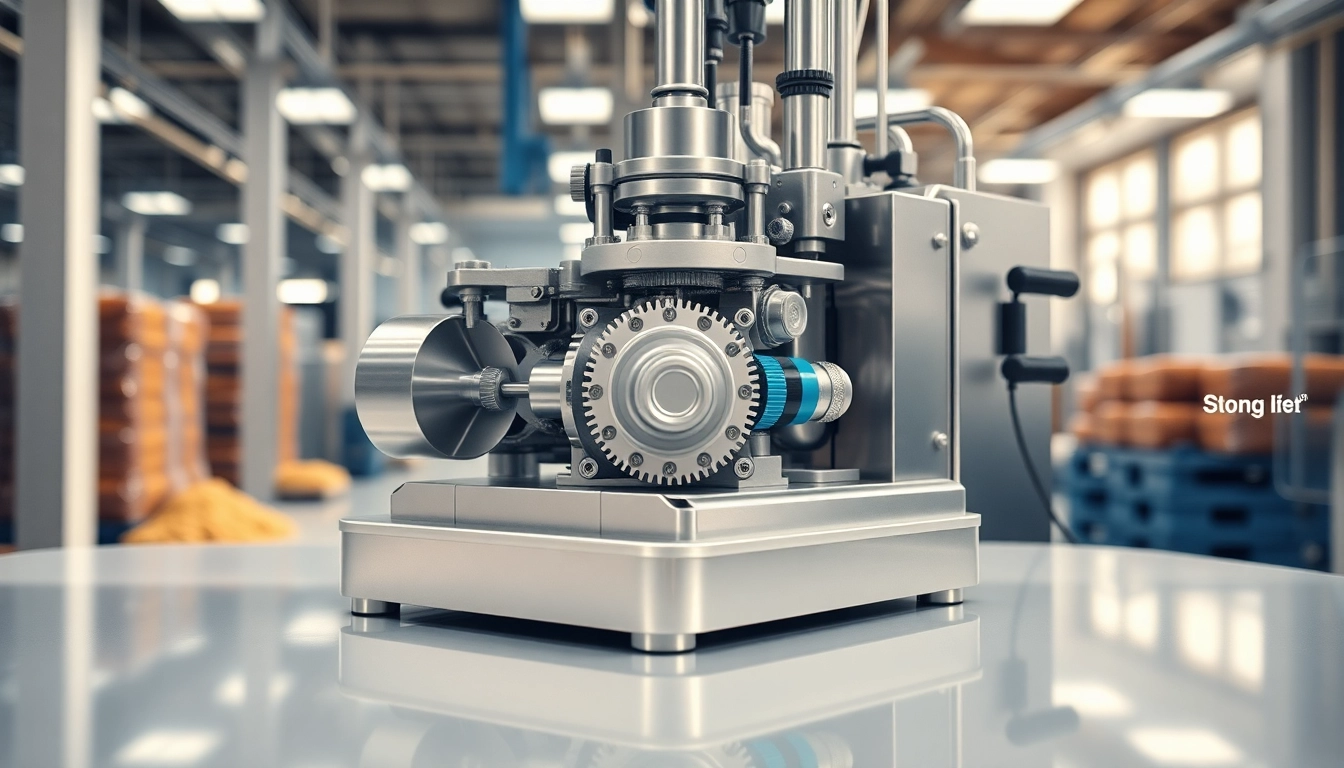Introduction to Machine Vision
In today’s fast-paced industrial world, machine vision has emerged as a pivotal technology that is revolutionizing operations across various sectors. By enabling systems to interpret visual information, machine vision plays a crucial role in quality control, automation, and data gathering. This capability is not just transforming productivity; it is also enhancing decision-making processes that rely on accurate visual analysis.
Definition and Importance of Machine Vision
Machine vision refers to the technology and methods used to provide imaging-based automatic inspection and analysis for various applications. At its core, it involves the use of cameras, digital signal processors, and algorithms to extract and interpret meaningful information from visual data. The importance of machine vision lies in its ability to improve efficiency, reduce human error, and ensure high quality in manufacturing and service processes. With the capability to perform tasks that require precision and consistency, machine vision systems are becoming integral to many industries.
Key Components of Machine Vision Systems
A typical machine vision system consists of several key components:
- Cameras: High-resolution cameras capture images or videos of objects or processes.
- Illumination: Proper lighting conditions are essential to ensure the best image quality.
- Processing Unit: This includes hardware and software that processes the captured images, enabling analysis and decision-making.
- Software Algorithms: Advanced algorithms are used for pattern recognition, measurements, and reporting.
- User Interfaces: These allow operators to interact with the system, configure settings, and view results.
Applications Across Various Industries
The applications of machine vision are vast and span multiple industries, including:
- Manufacturing: In manufacturing, machine vision systems are employed for quality control, assembly verification, and defect detection.
- Automotive: The automotive industry uses machine vision for tasks such as inspection of parts, alignment during assembly, and detection of surface defects.
- Food Processing: Machine vision ensures product quality by detecting foreign objects, assessing product size, and checking labels.
- Pharmaceuticals: In pharmaceuticals, these systems are crucial for monitoring packaging accuracy and ensuring compliance with regulations.
- Logistics: Machine vision assists in inventory management and automated sorting processes within warehouses.
How Machine Vision Works
Image Capture Techniques
Machine vision systems exploit various image capture techniques to acquire data. The techniques used largely depend on the specific application:
- 2D Imaging: Most common in manufacturing, this involves capturing flat images of objects to inspect dimensions, patterns, and surfaces.
- 3D Imaging: This technique provides depth information, allowing for more complex assessments, such as volumetric measurements and spatial orientation.
- Multi-Spectral Imaging: This captures data across various wavelengths, enabling applications in food safety and quality assurance by detecting chemical composition.
Processing and Analysis of Visual Data
Once images are captured, they are processed using various techniques to extract meaningful information. The processing steps typically involve:
- Preprocessing: This phase might include noise reduction, contrast enhancement, and other adjustments to improve image quality.
- Feature Extraction: Key features such as edges, shapes, and colors are identified to aid in object recognition.
- Analysis: Using machine learning algorithms, the system interprets the features to make decisions, such as identifying defects or confirming the correct assembly of components.
Integration with Other Technologies
Machine vision does not operate in isolation; it often integrates with other technologies to enhance its capabilities. For instance, machine vision systems can interface with:
- Automated Robots: They can guide robotic arms in picking, placing, or assembling components with precision.
- Industrial Control Systems: These systems synergize with machine vision to coordinate manufacturing processes, enhancing workflow efficiency.
- Data Analytics Tools: Analytics platforms can aggregate data collected from machine vision systems, transforming operational insights into strategic business decisions.
Machine Vision vs. Computer Vision
Understanding the Differences
While the terms “machine vision” and “computer vision” are often used interchangeably, they encompass different concepts. Machine vision specifically refers to applications used in industrial contexts for tasks like inspection and classification. On the other hand, computer vision is a broader field that involves enabling computers to interpret and understand visual information from the world, including real-time image processing for applications such as facial recognition and autonomous vehicles.
Use Cases for Each Technology
To further elucidate the distinctions, consider the following use cases:
- Machine Vision: Used predominantly in factory automation, quality control, and process monitoring.
- Computer Vision: Applied in diverse areas such as medical imaging, social media, and autonomous vehicle navigation.
Future Impacts on Industries
As industries increasingly adopt machine vision, the future impact is likely to include heightened productivity, improved accuracy in inspections, and enhanced data analytics capabilities. With the integration of AI and machine learning, machine vision systems will become smarter, allowing for predictive maintenance and real-time quality control adjustments.
Types of Machine Vision Systems
1D, 2D, and 3D Systems Explained
Machine vision systems can be classified into several types based on their measurement capabilities:
- 1D Machine Vision Systems: These systems typically measure linear features such as lengths or diameters.
- 2D Machine Vision Systems: More common, these systems analyze images to assess surface features, colors, or defects.
- 3D Machine Vision Systems: These provide depth perception and volumetric analysis, which is particularly useful in complex assembly tasks and quality inspections.
Choosing the Right System for Your Needs
Selecting the appropriate machine vision system requires an understanding of your specific application requirements. Factors to consider include:
- The complexity of the objects to be inspected.
- Required resolution and speed of analysis.
- Environmental conditions such as lighting and the presence of contaminants.
Innovations in Machine Vision Technology
Continuous advancements in technology are driving innovation within the machine vision field:
- AI Integration: The incorporation of artificial intelligence is enhancing the ability of machine vision systems to learn from data and improve their accuracy over time.
- Edge Computing: Processing data at the edge reduces latency and enhances real-time decision-making capabilities.
- Improved Sensors: The development of high-resolution sensors and advanced imaging techniques contributes substantially to the effectiveness of machine vision systems.
Best Practices and Implementation Tips
Common Challenges in Implementing Machine Vision
Despite its benefits, implementing machine vision systems can present various challenges:
- Complexity of Setup: Proper calibration and setup can be intricate, requiring expertise.
- Variability in Products: Changes in material or environmental conditions can affect image consistency.
- Integration with Existing Systems: Ensuring seamless cooperation with current processes can be challenging.
Measuring Performance and ROI
To justify the investment in machine vision, businesses must effectively measure its performance and return on investment (ROI). Metrics to consider include:
- Throughput rates: The speed at which goods are processed and inspected.
- Defect rates: The reduction in faulty products that pass through the production line.
- Operational costs: Evaluating overall cost savings compared to traditional manual inspection methods.
Future Trends in Machine Vision Development
Emerging trends indicate that machine vision will continue to evolve with advancements in technology. Notable trends include:
- The rise of collaborative robots (Cobots) that integrate machine vision for safer and more efficient interaction with human workers.
- Expanding applications in areas such as agriculture, robotics, and healthcare—each capitalizing on improved data accuracy.
- The development of open-source software in machine vision, making it more accessible and customizable for businesses of all sizes.



